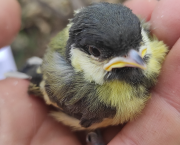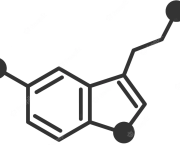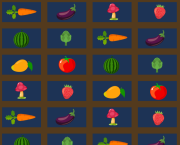
Biopesticides
 6 min
6 min
Biopesticides
How to manipulate nature sustainably
Industrial production: the advantages...
The process of natural selection has developed numerous highly complex life forms. Despite their diversity, what they all have in common is the need to feed themselves. We humans are also characterized by this need, but we are distinguished from all other life forms by our peculiar ability to organize the growth and consumption of other species in ways that maximize yield: we manage the production of our food through cultivation and breeding. This ability of ours has been particularly evident with the advent of industrial-scale food production, which, thanks to agricultural machinery, has enabled people in the most technologically advanced countries to abandon the countryside in favor of city life. In fact, the use of chemical fertilizers and genetic engineering linked to productively relevant plants has allowed enough overproduction to not only feed local populations but to sell the products of agricultural production in countries where these techniques are less developed, improving the country's economy. This is shown by FIDAF data, which indicate that first world countries are both major exporters and importers of food consumed on a daily basis.
... And the drawbacks
However, these technological innovations come with several weaknesses. Organisms of all sorts have adapted to feed on our crops so systematically arranged, finding fertile ground for proliferation. These can be fungi, a variety of insects, mammals and even other plants. Historically, traditional remedies based on crop rotation, crop diversification and planting of plants with special repellent abilities, perhaps not fully understood at the time, have been used to protect crops. Techniques that were often fortuitous and closely linked to climate and water availability.
This was repeated until the advent of the modern age, a time when traditional remedies were supplanted by chemical ones such as insecticides and herbicides. Often based on molecules from stress-resistant plants, these have extremely high concentrations of active ingredient and can be spread massively over crops and thus protect each individual plant more or less directly. The genetic malleability of some plants has also allowed the development of gene modifications that increase the production of insecticidal or repellent molecules in some plants of basic agricultural importance such as maize and rice.
It soon became apparent that the rush to chemicals is not healthy in the long run for the soil and the immediate environment. Insect die-offs, reduction in the productive capacity of the soil, and general loss of biodiversity are all events related to industrial food production.
But how, then, is it possible to continue to derive food in the manner of industrial production without, however, decreasing the productive capacity of the soil and respecting pollinator species?
A green future for agriculture
A solution that is as innovative as it is archaic are Biopesticides, which are predatory or pathogenic organisms that are used on par with modern insecticides for the elimination of phytopathogens. Biopesticides are defined as "all those organisms capable of putting an end to the establishment in a crop of all living things harmful to that culture."
The most common and simple plant-damaging animals are phytophagous mites, which proliferate by feeding on the sap of plants, inducing them into a state of stress or even killing them. In nature they have natural predators, but these predators are unlikely to be in the right place and at the right time for the farmer to defend his plants. This is why various companies are appearing in the pesticide market by breeding predatory aphids in greenhouses that will then need to be transferred to the agricultural environment. The breeding process is very similar to what happens in nature, that is, phytophagous aphids, such as those in the Tetranychidae family, are released on plants of various species and allowed to proliferate. After a period of proliferation, predatory mites of the species Phytoseiulus persimilis are added, which is able to reproduce massively due to the abundance of prey, which will also be repeated in agricultural settings, exponentially increasing the number of mites present.
Solution or additional problem?
The problem with this set of techniques is the high specificity with which they must be applied; in fact, there is a risk of promoting the establishment of erroneous elements and thus the failure of the treatment with a consequent proliferation of pathogens, and it is therefore typically controlled by extremely specialized universities. In addition, the presence of multiple pest species requires the use of multiple species of Biopesticides, which makes this process possibly more challenging than simply dispersing a generalist phytopharmaceutical. However, the enormous advantages given by the tight controls required for approval of the technologies, as they are composed only of elements already present in nature, and the very low environmental impact associated with the systems themselves makes Biopesticides one of the best solutions for industrial food production by reducing the impact it has on the environment. In conclusion, Biopesticides could be linked to the future of our agricultural production capacity, with minimal damage to the environmental component unrelated to human production as native species are used, but knowledge of their real effects in the field is not yet complete.









 English
English
 Français
Français
 Deutsch
Deutsch
 Italiano
Italiano
 Español
Español



 Contribute
Contribute










 You can support your favorite writers
You can support your favorite writers





